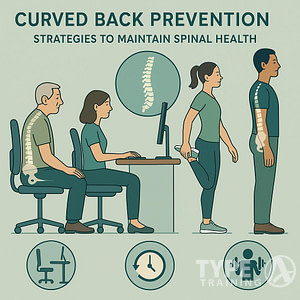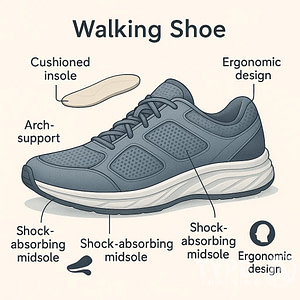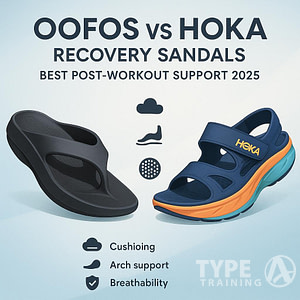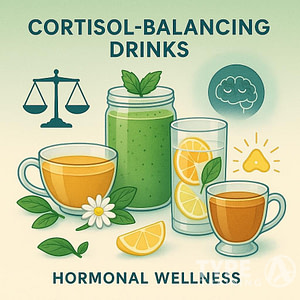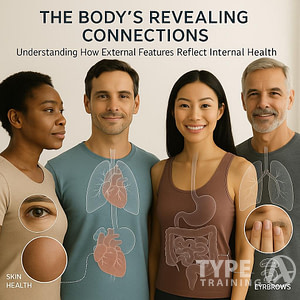Staying active becomes increasingly vital as you age. Professional guidance can make a significant difference in your fitness journey.
A personal trainer specialized in senior fitness creates customized exercise programs that enhance mobility, strength, and balance. They also consider your unique health needs and physical limitations.
Many seniors hesitate to start exercising due to concerns about injury or uncertainty about proper techniques. Working with a qualified personal trainer eliminates these worries by providing expert supervision, correct form instruction, and exercises specifically designed for older adults.
Your fitness goals deserve the same attention and expertise as any other age group. A personal trainer helps you maintain independence, improve daily functions, and boost your overall quality of life through safe, effective workouts tailored to your capabilities and aspirations.
Popular posts:
Key Takeaways
- Personal trainers create safe, customized exercise programs that address senior-specific health needs
- Professional guidance ensures proper form and technique while preventing exercise-related injuries
- Regular training sessions improve physical independence and enhance mental well-being
Assessing Individual Health Considerations
Personal trainers evaluate your current health status and medical history to create exercise programs that address specific needs while maintaining safety standards.
Health Screening and Safety
You’ll need to complete a detailed health questionnaire before starting any exercise program. This screening identifies existing medical conditions, medications, and previous injuries that could affect your workout routine.
A certified personal trainer will request medical clearance from your doctor if you have heart disease, arthritis, osteoporosis, or other chronic conditions.
Regular monitoring of your blood pressure, heart rate, and perceived exertion during exercise sessions helps maintain safe training intensity levels.
Adapting to Age-Related Conditions
Your trainer will modify exercises to accommodate physical limitations like reduced joint mobility or balance issues. Special attention focuses on preventing falls through targeted balance and stability training.
Equipment selection and exercise intensity are adjusted based on your bone density levels and joint health. Low-impact alternatives are provided when necessary.
Your trainer also creates progressive workout plans that account for normal age-related changes in strength, flexibility, and stamina. Exercise modifications can help manage common conditions like arthritis pain or limited range of motion while still providing effective workouts.
Designing Customized Fitness Programs
Personal trainers develop individualized workout plans that match your current fitness level, health conditions, and specific goals. These programs evolve as you progress, ensuring optimal results while maintaining safety.
Creating Tailored Exercise Plans
A certified personal trainer begins by assessing your physical capabilities, medical history, and mobility restrictions. This evaluation helps determine appropriate exercise intensity and frequency for your needs.
Your trainer will set realistic, achievable goals based on your assessment results. These goals might include improving daily activities like climbing stairs or carrying groceries.
The workout plan adjusts as you gain strength and confidence. Your trainer monitors your progress through regular assessments and modifies exercises accordingly.
Incorporating Flexibility and Balance Exercises
Balance training reduces fall risk and improves stability for daily activities. Your trainer will guide you through exercises like single-leg stands and heel-to-toe walks.
Flexibility work helps maintain joint mobility and muscle function. Structured stretching routines target key areas like shoulders, hips, and ankles.
Your trainer demonstrates proper form for each movement and provides hands-on corrections when needed.
Implementing Strength Training Protocols
Resistance training helps preserve muscle mass and bone density. Your program will include exercises using body weight, resistance bands, or light dumbbells.
Your trainer selects appropriate weights and repetitions based on your capabilities. They focus on functional movements that support everyday activities.
Safety remains the priority, with careful attention to proper form and breathing techniques during each exercise.
Improving Functional Independence
Personal trainers help seniors maintain their lifestyle and self-sufficiency through targeted exercise programs. These programs strengthen the body‘s key systems while enhancing daily living abilities.
Enhancing Mobility and Flexibility
A personal trainer develops exercises that mirror everyday movements like reaching, bending, and climbing stairs. These movements directly translate to practical activities such as putting away groceries or getting in and out of cars.
Your trainer will guide you through specific stretches and range-of-motion exercises to maintain joint flexibility. These exercises help prevent stiffness and improve your ability to move freely.
Regular mobility training reduces the risk of falls by strengthening your core and improving balance. Your trainer will also teach proper posture and movement patterns that make daily tasks easier and safer.
Promoting Cardiovascular and Heart Health
Structured cardio exercises strengthen your heart and improve blood circulation. Your trainer will monitor your heart rate and adjust workout intensity to match your fitness level.
Low-impact activities like walking, swimming, or stationary cycling protect your joints while building endurance. These exercises help you maintain the stamina needed for daily activities.
Regular cardiovascular training lowers
Fostering Consistency and Accountability
Regular sessions with a personal trainer create a structured framework for maintaining your fitness journey. A trainer serves as both a guide and accountability partner to keep you on track.
Setting and Achieving Fitness Goals
A personal trainer helps you establish clear, measurable fitness goals based on your current abilities and health status. They break down larger objectives into smaller, achievable milestones.
Your trainer documents your progress through regular assessments, adjusting workout plans as needed. This data-driven approach ensures you can see tangible improvements over time.
Goals might include improving balance, increasing strength, or enhancing mobility. Your trainer will create specific timelines and action steps to reach these targets.
Maintaining Motivation
Personal trainers provide consistent encouragement during challenging moments in your fitness journey. They celebrate your achievements and help you push through plateaus.
Scheduled appointments create a routine you’re more likely to maintain. Your trainer’s presence adds a layer of commitment that makes it harder to skip workouts.
They help identify and overcome common barriers to exercise, such as physical limitations or lack of confidence. When motivation wanes, your trainer can remind you of your initial goals and the progress you’ve made.
Regular check-ins between sessions help maintain focus and dedication to your fitness program. Your trainer can adjust workout plans to keep exercises fresh and engaging.
Supporting Mental and Cognitive Health
Regular exercise sessions with a personal trainer deliver powerful benefits for your brain health and emotional well-being, helping you stay sharp and positive as you age.
Benefits for Mental Well-Being
Working with a personal trainer provides valuable social interaction and emotional support during your fitness journey. The consistent encouragement helps reduce feelings of isolation and loneliness.
Exercise releases endorphins and other mood-boosting chemicals in your brain, leading to reduced stress and anxiety levels. Your trainer helps you maintain a consistent routine that stabilizes these positive effects.
The sense of accomplishment from reaching fitness goals with your trainer’s guidance builds confidence and self-esteem. This improved self-image carries over into other areas of your life.
Improving Cognitive Function
Regular physical activity strengthens neural connections and increases blood flow to your brain. Your trainer designs exercises that specifically target coordination and mental focus.
Studies show that strength training and aerobic exercise help protect against age-related cognitive decline. The complex movements and new skills you learn in training sessions keep your mind active and engaged.
Your trainer introduces variety in workout routines, which creates new neural pathways and enhances memory function. Following proper form and exercise sequences provides ongoing mental stimulation.
Physical activity with professional guidance can improve reaction time and decision-making abilities. These cognitive benefits help maintain your independence in daily activities.
Preventing Injuries Through Proper Technique
Personal trainers serve as guardians of safety during exercise, teaching precise movements and monitoring form to protect seniors from potential injuries. Their expertise becomes particularly valuable when adapting exercises for age-related conditions like osteoporosis.
Teaching Safe Exercise Execution
A certified personal trainer carefully demonstrates and guides you through each exercise movement with meticulous attention to detail. They watch your posture, breathing, and alignment to ensure maximum safety and effectiveness.
Your trainer will correct subtle form issues that could lead to strain or injury, such as improper knee positioning during squats or incorrect spine alignment during lifting exercises.
Each session includes specific cues and hands-on adjustments to help you master proper technique. These corrections become automatic over time, allowing you to exercise safely even when training independently.
Adapting Workouts for Osteoporosis Management
If you have osteoporosis or low bone density, your trainer will design exercises that strengthen bones while minimizing fracture risks.
They focus on weight-bearing exercises that build bone mass safely.
Your workout plan will avoid high-impact movements and dangerous bending positions. Instead, it emphasizes:
- Controlled resistance training
- Balance exercises to prevent falls
- Proper spine alignment during all movements
- Modified versions of traditional exercises
The trainer adjusts exercise intensity and range of motion based on your bone density levels and overall physical condition.
Monitoring Progress and Adjusting Programs
A personal trainer tracks your fitness achievements through precise measurements. Then, they tailor workout modifications to match your evolving capabilities.
This systematic approach ensures continuous improvement while maintaining safety and effectiveness.
Regular Assessments and Feedback
Your trainer conducts periodic fitness evaluations to measure strength, flexibility, and endurance improvements.
These assessments include tracking vital signs, mobility range, and exercise form quality.
Physical benchmarks like walking distance, balance duration, and weight-lifting capacity provide concrete evidence of your progress. Your trainer documents these metrics to create a clear picture of your fitness journey.
Immediate feedback during exercise sessions helps perfect your movements and boost confidence in performing new activities.
This hands-on guidance reduces injury risks while maximizing workout benefits.
Evolving with Changing Fitness Levels
Your trainer modifies exercises based on your improving strength and stamina.
As you master basic movements, they introduce new challenges that maintain steady progress.
The workout intensity increases gradually, always staying within your comfort zone. Your trainer adjusts repetitions, weights, and exercise complexity to match your growing capabilities.
If health conditions change or you experience temporary setbacks, your trainer quickly adapts the program to ensure safe, continuous progress.
They may focus more on specific areas that need attention while maintaining overall fitness gains.
Tailored In-Home Personal Training for Seniors
Type A Training of NYC, owned by Nathaniel Oliver, provides tailored in-home personal training for seniors aged 60 to 100+. Their expert trainers create customized workout plans based on each senior’s unique needs, fitness level, and available equipment, ensuring safe and effective sessions.
Nathaniel Oliver’s team collaborates with doctors and physical therapists to develop appropriate exercise programs and can provide all necessary equipment. Seniors can schedule a consultation to discuss their fitness goals and health concerns.
Not in our service area for in-home visits?
Can’t access our in-home personal training services? No problem! Enjoy the same level of personalized fitness instruction through our virtual training sessions, designed specifically for seniors. With Type A Training, seniors can maintain an active lifestyle without the hassle of traveling to a gym, benefiting from personalized attention and tailored workouts that meet their specific requirements.
Frequently Asked Questions
Personal trainers provide customized fitness solutions that enhance seniors’ physical capabilities. They also ensure safety and steady progress.
Professional guidance helps older adults maintain independence and improve their quality of life through structured exercise programs.
What can seniors expect from working with a certified fitness professional?
You’ll receive a thorough initial assessment of your current fitness level, medical conditions, and mobility restrictions.
Your trainer will create a structured workout plan that aligns with your specific goals and limitations.
Each session includes proper form instruction, progress monitoring, and adjustments to exercises as needed.
Is engaging a personal trainer cost-effective for the elderly population?
The investment in personal training often reduces future healthcare costs by preventing falls and maintaining functional strength.
Many trainers offer package deals or small group sessions to make the service more affordable.
Some insurance plans and Medicare Advantage programs may cover fitness programs or personal training sessions.
How does physical exercise under guidance benefit seniors’ mental health?
Regular exercise sessions boost mood and reduce symptoms of anxiety and depression through the release of endorphins.
Social interaction with a trainer provides motivation and accountability while combating isolation.
Achievement of fitness goals strengthens self-confidence and cognitive function.
What qualifications should one look for in a personal trainer specializing in senior fitness?
Look for certifications from recognized organizations like
Verify their experience working with older adults and knowledge of age-related conditions.
Check for CPR certification and liability insurance coverage.
In what ways does personal training tailor workouts to an older adult’s needs?
Your trainer modifies exercises based on your mobility level, balance capabilities, and existing health conditions.
Equipment choices and workout intensity are adjusted to match your comfort and safety requirements.
Exercise programs evolve as your strength and endurance improve.
How might personal training sessions support injury prevention for seniors?
Trainers teach proper warm-up techniques. They also ensure correct form during all exercises.
Balance and stability training reduces fall risk and improves coordination.
Regular assessment helps identify potential physical limitations. This is before they lead to injuries.








